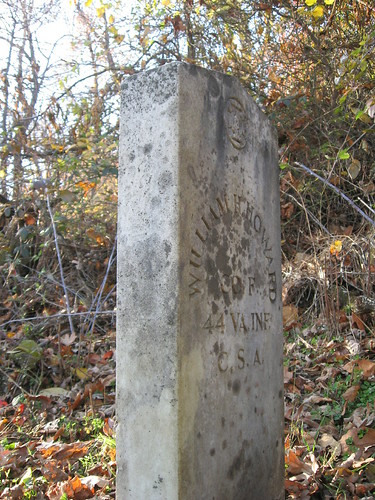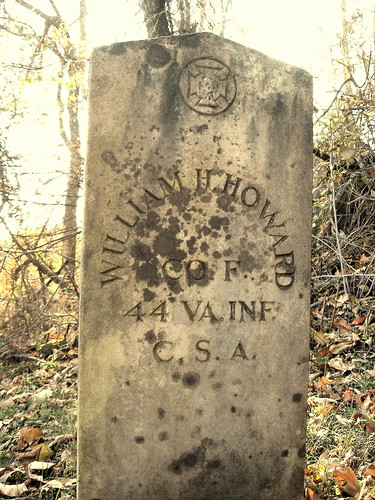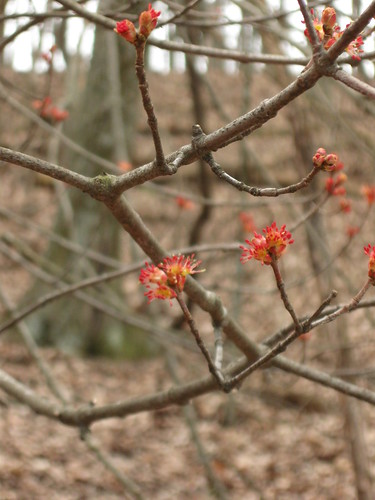
The Grave of Willam Howard.
Hiking along Brown's Gap Turnpike in Shenandoah National Park I found the headstone. It was not dated but I immediately thought of how Thomas Jackson had led his men through just about every crossing through these mountains during his Valley Campaign. Modern generals still study how Jackson carried out that campaign. The single headstone seemed odd. Had this been a sick or injured man who died alone? The battles of this campaign did not happen in the passes, did they?
There did not seem to be any record of a William H. Howard. Then I Saw This [click to read] at Rightside VA. Here is some new information on the story:
For many years Browns Gap was one of the principal routes for taking farm produce from the Shenandoah Valley to Richmond. Browns Gap and the turnpike were used briefly during the Civil War. On May 2, 1862, at the beginning of his Valley Campaign, Thomas "Stonewall" Jackson marched his entire army through Browns Gap. From June 9 to June 12, after the Battle of Port Republic at the end of the Valley Campaign, Jackson's army camped in and near Browns Gap. On September 25, 1864, General Jubal Early and his army, after their defeat at Winchester, fortified themselves here and fought off Sheridan's attacks for two days while awaiting reinforcements. Today Browns Gap Turnpike is a SNP fire road.
The grave marker along Browns Gap fire road notes William H. Howard, Company F, 44th VA. INF, C.S.A. One of the two Fluvanna infantry companies which enlisted in the spring of 1861, the "Fluvanna Hornets", had formed at Kent's Store on May 20 under Captain Thomas K. Wiesinger.The Fluvanna Hornets would be the name of Company F. Of the 88 men which enlisted in Company F, 28 would die before the war ended.
The roster shows that there were three Howard brothers in company F:
Howard, John T.; Private *
Howard, Napoleon B.; Private
Howard, William W.; Private *
*= died during war.
According to the White House of the Confederacy, both William and John both suffered from Typhoid fever in the camp. Typhoid is a bacterial dysentery, Salmonella thyphosa, which from poor sanitary conditions can lead to dehydration and death. It is unclear why William is buried along the Browns Gap fire trail. Records shown that he enlisted June 12, by August he was sick at camp, and died at Camp Allegheny on Oct 1, 1861. Possibly he was being transported home to Fluvanna and was buried along the way. The middle initial "H" is likely an error from poor records, as a sloppy "W" may look like a sloppy "H" . The grave headstone does not have a date, but lists only Company F, 44th Infantry, CSA. His brother John died 1 Aug 1861 at Monterey, but his other brother Napoleon survived and was promoted to Sergeant, only to be later taken as a prisoner of war at Gettysburg.
Special thanks to Rightside VA [click to read]!

The Grave of William Howard, a Confederate soldier, in Shenandoah National Park. His body was laid to rest near the old Brownsville Turnpike.

Spring budding forth in the Blue Ridge Mountains.




No comments:
Post a Comment